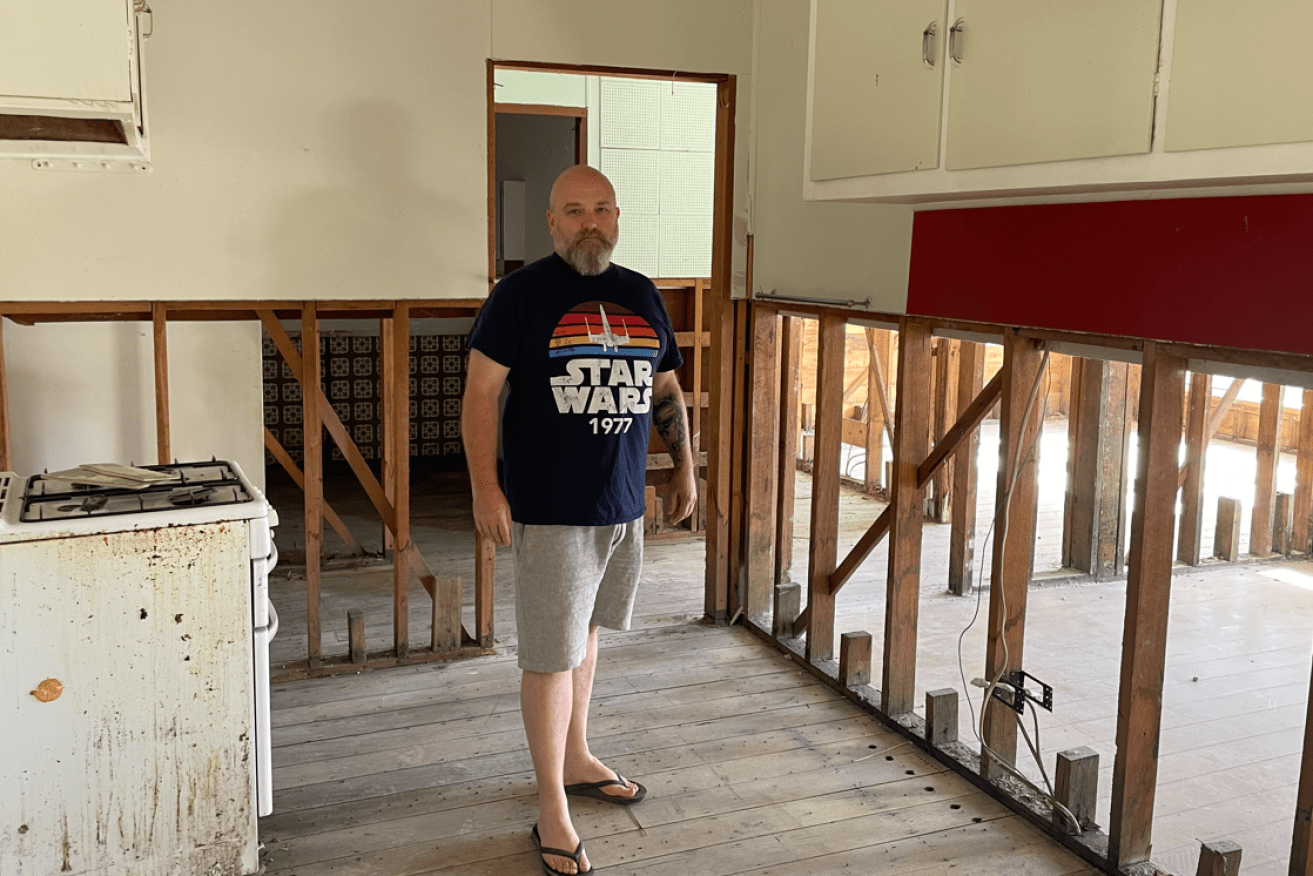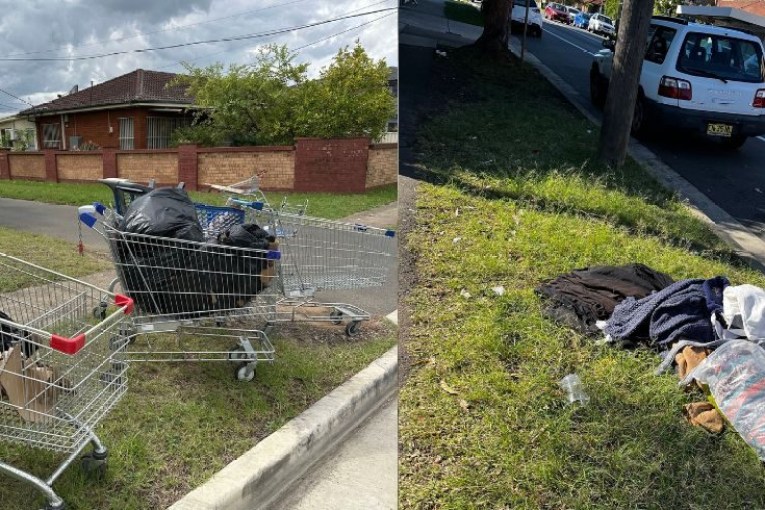In Rochester, the flooding has receded but the heartbreak and hard work remain

Leigh Wilson surveys what is left of the family home in Victoria's flood-ravaged Rochester. Photo: AAP in his childhood home in Rochester
As Leigh Wilson walks through his childhood home in Rochester in northern Victoria, there isn’t much left besides floorboards, a few cabinets and his memories.
“In my teenage years, I was in this room … I used to sneak out that window,” Mr Wilson says, pointing at the gap where the walls used to be in the home, now gutted after the spring floods.
Around 1000 homes and local businesses in Rochester – with a population of about 3,100 and some 180km north of Melbourne – were inundated when water surged over the banks of the Campaspe River in October before peaking at 115.7 metres above the mean sea level.
“The Campaspe River is the fastest rising river in Victoria,” said Mr Wilson, a former mayor who is now leading the town’s recovery committee.
A small line inside an outhouse marks the peak – officially recorded as 115.4m AHD – of the last major flood in 2011.
October’s high-water mark hasn’t been inserted yet, but on the outside wall, the silt and soil residue stops several inches higher than the old line of drawn in Texta.
Getting by as best they can
His mother Lorraine, 83, will live in a caravan in the driveway while the home is repaired.
Lorraine has lived in the house, and raised five children, since her husband built it in the late 1950s.
“Mum’s really excited. Not sure how she’ll be in a few months though,” Mr Wilson told AAP.
“She just wants to be here. But the sad reality is … a lot of our older members in the community won’t be back in their homes before they die.”
Emergency Recovery Victoria continues to assist Victorians displaced by the record floods.
“ERV will continue to support local councils and partner organisations to offer personalised assistance to displaced residents as they transition from emergency and temporary accommodation to permanent housing,” ERV Chief Executive Mariela Diaz told AAP on the ground this week.
An undersupply of tradespeople and materials mean Lorraine and hundreds of others have no idea when they will be able to move back into their homes.
“Without exaggeration, there will probably be somewhere between 150 and 200 caravans in people’s driveways,” Mr Wilson said.
On Saturday, Mr Wilson and his wife counted 250 caravans parked in driveways across Rochester.
‘We need them more than ever’
Mental health services, builders, tradespeople and labourers were already in short supply before the floods.
“Now we need them more than ever,” Mr Wilson said.
“If people want a little bit of a working holiday, and they’ve got proper trade skills, there is so much work on the go.”
Mr Wilson, who is also a draftsman, said tradies and labourers found recovery work rewarding.
“It’s not just doing a reno on someone’s house, you help them get back in their house after a disaster,” he said.
“But people is what we need, and we’re going to need them for 12 months out to two years.”
Sharon Williams, who with her husband owns a Rochester tyre business that was flooded, is looking even further ahead.
Ms Williams and a small group of locals are part of a groundswell with eyes on an early release mechanism upstream at Lake Eppalock.
“We wanted to be proactive, not reactive,” Ms Williams said.
“We just want to keep our little town going and alive.”
Currently, there is no ability for catchment authority Goulburn Valley Water to create airspace at lake Eppalock to avoid future spills.
“It’s not going to completely stop the flooding, but it won’t be on the extremes that it has been,” Ms Williams said.
“We can’t go through this again.”
The first step requires funding a feasibility study to assess the hydrological realities of the project, which will likely cost tens of millions of dollars.
The committee has raised the issue with the local council and has support from their state MP, Victorian Nationals leader Peter Walsh, who put the study to Premier Daniel Andrews on the last sitting day of state parliament in December.
‘Not going to be cheap’
“It’s not going to be cheap, but look at the damage – the damage bill for government, the damage bill for individuals in Rochester and Echuca … it’s an investment,” Mr Walsh said.
In parliament, Mr Andrews thanked the Nationals leader for his constructive engagement on the issue but so far has stopped short of green-lighting the study.
“These things are well above politics,” Mr Andrews, who visited Rochester last week, told parliament in December.
“I am not a hydrologist and I am not an engineer, but we do have many people across our public sector who have already begun the process of looking at this particular flood event to look at what might be able to be done in the future.”
Back in Rochester, as the mud cracks on the banks of the Campaspe River in the late January heat, the residents continue with the clean-up and rebuilding.
“There’s still a tremendous amount of goodwill… but a lot of people are just very tired,” Mr Wilson said.
“It’s been a long journey to get to this point and we’ve just got so much more to go.”
Ms Williams agrees Rochester will need help for a long time.
“Everyone just keeps saying, ‘Don’t forget about us’.”
-AAP








